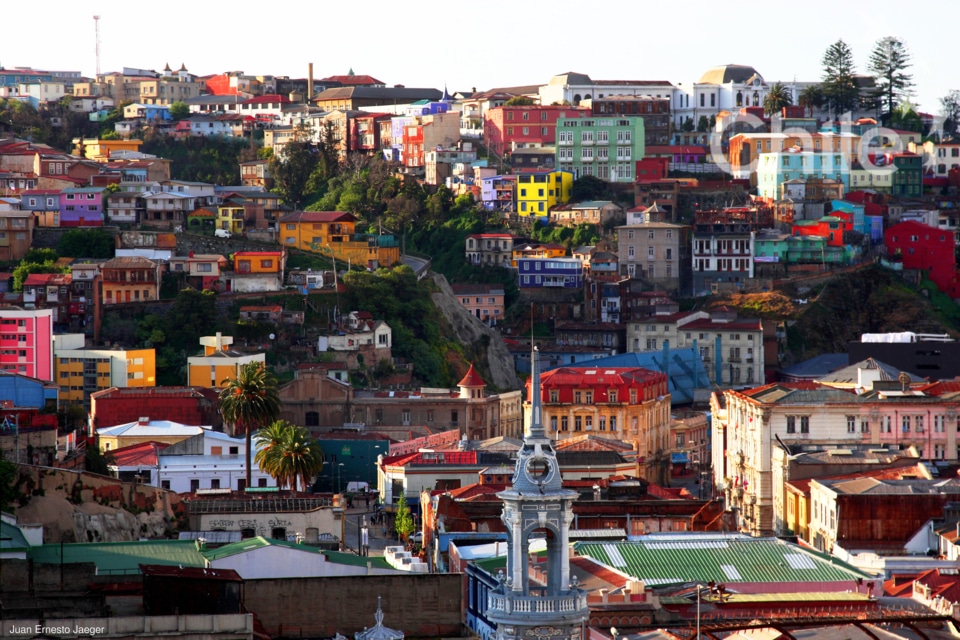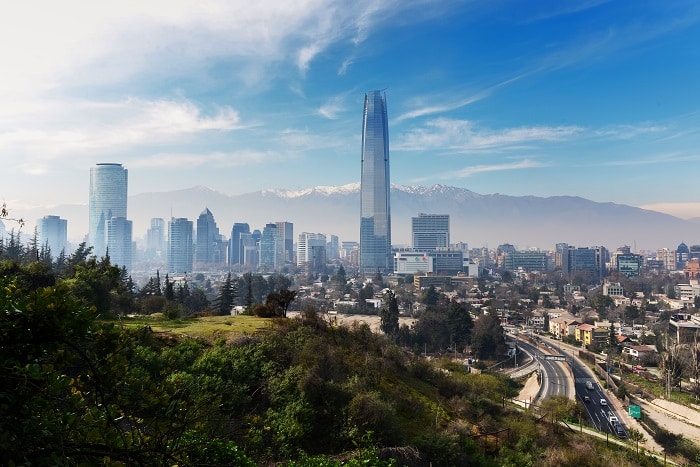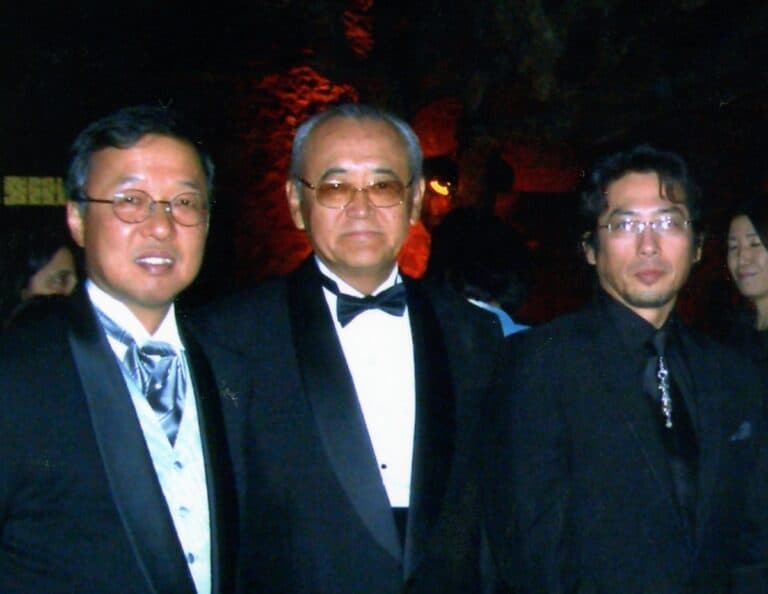Interview with Chilean Ambassador to Japan, Ricardo G. Rojas.

What Japan Loves About Chile
Chile is not only one of the longest countries in the world but also rooted in principles of family, tasty food, and hospitality. In this interview, the Chilean ambassador to Japan, H. E. Mr. Ricardo G. Rojas gives insights into the many Chilean foods popular in Japan, Chile’s support and progress in women empowerment, the various programs put in place for youth development, and of course, the top tourist attractions in the country. Ambassador Ricardo G. Rojas became the Chilean ambassador to Japan in July 2021. He has represented Chile for nearly 40 years.
1. Could you tell us about your career?
I feel grateful and privileged to be a diplomat. Representing Chile while getting to know different places and cultures is tremendously inspiring. The special bond you build with people from where you have worked – many of them becoming lifetime friends – is a gift. So, after serving for almost 38 years in the Chilean Foreign Service, and having lived in eight countries (New Zealand, Poland, United States, Peru, Uruguay, Colombia, Croatia, and Japan) my main sentiment is gratitude.

2. Chilean foods already become famous in Japan. Could you tell us again what kind of food is being imported?
We have seafood such as salmon and trout, sea urchins, mussels, cuttlefish, octopus, abalone (locos), and algae (cochayuyo). Also, there are fruits like grapes, blueberries cherry, blueberry, and kiwifruit; and meat such as pork, chicken, lamb, and bovine (mainly offal such as tongue).
Of course, there is wine, joined now in the alcoholic beverages category by Chilean pisco, and gin.
There are also processed foods (very successful in the Marché de Yurakucho in 2021 and 2022): olive oil, honey, rosehip tea, and dried and dehydrated fruits. And in a more industrial scope: tomato paste, juice, frozen fruits and vegetables, lemons and grapes, different varieties of berries (strawberries, blueberries, blackberries), and asparagus.
3. What other Chilean foods will be big hits in Japan in the future?
Chile is one of the main fruit-producing and exporting countries in the world, so fruits still have great potential to increase their presence in the Japanese market.
Fresh grapes: Lately, grapes have attracted the attention of the Japanese market due to the great varieties that Chile offers. Today, more than thirty Chilean grape varieties have already been introduced in Japan.
Fresh cherries: Fresh cherries have a thick pulp, with a deep red color and intense flavor making them a perfect fruit for winter. The cherry season is between November and mid-February, coinciding with various events, which often highlight red, such as Christmas, the end and beginning of the year, and Valentine’s Day.Chile
Blueberries: The blueberry’s grain is large; it has a firm pulp and is not too watery. Apart from fresh, they are also imported frozen.
Kiwifruit: Japan imports kiwifruit from Chile as well. In 2021 with supermarket campaigns for Chilean kiwifruit were developed, which were well received by consumers for their high quality.
Lemons: The pulp is firm and has relatively mild acidity. It has been a common product in supermarkets for years, so there must be many people who have already bought it without realizing that it is from Chile.
Pork: The quality of our pork products is already highly regarded in the Japanese market, especially in the HORECA (Hotel/Restaurant/Catering) sector. The CPTPP (Comprehensive and Progressive Agreement for Trans-Pacific Partnership), which came into effect for Chile on February 21, is also expected to increase competitiveness and further expansion of our exports.
Lamb meat: After being imported for the first time in 2021, a promotional campaign for its branding was launched in 2022, and thanks to it, foodies now recognize the “Chilean Patagonian lamb” as a gastronomy product. Although it is produced and exported in small quantities, it is gaining importance as a niche and star product.
Chilean honey is also a niche product. Various types of honey are produced, derived from endemic plants native to Chile, such as Ulmo and Quillay, this honey, while not suitable to compete on prices with mass-producing ones, has increasingly attracted the attention of the international market in recent years due to its high antimicrobial properties. Chilean honey will soon become a star product in the Japanese market as the health food market in the country continues to grow. Although we do not intend to participate in price competition, this is another product that will benefit from the CPTPP, with tariffs reduced from 25.5% to 9.5%.
4. Chilean salmon has already gained popularity in Japan as high-quality salmon. What kind of efforts did you make to get there?
Various campaigns have been carried out in collaboration with leading Japanese supermarket chains to make final consumers aware that Chile is one of the main suppliers of salmon. Japan is one of the most demanding countries in the world concerning quality, so there has been a significant effort to maintain and improve the quality of Chilean salmon in pursuit of increasing its presence.
In the 1980s, when the salmon industry began in Chile, most exports consisted of frozen HG (i.e., headed and gutted, a less processed product in which only the head and guts are removed). However, after several years the production of value-added products such as frozen salted fillets or frozen fillets for Sashimi has been increasing, which has favored its popularity in the Japanese market. Thanks to the evolution of aquaculture technology in the last 40 years, it has become possible to supply trout year-round .

5. What kind of support is Chile providing for women’s social advancement? Does the government have any policies to support women’s participation in society?
In 2015, the Ministry of Women and Gender Equality was created, replacing the National Service for Women (established in 1991). Its main objectives are to address, prevent and eradicate all types of violence and arbitrary discrimination against women, diversities, and gender dissidence; influence the actions of State and private institutions in addressing violence against women, diversities, and gender dissidence; improve equal participation, economic empowerment, and autonomy of women; strengthen the conditions for sexual and reproductive autonomy; recognize and make visible the unpaid domestic and care work by housewives; and promote a culture of respect and recognition for gender equality.
Furthermore, a series of legal reforms have been promoted, such as the “Ley de Responsabilidad Parental y Pago Efectivo de Deudas de Pensiones de Alimentos” (“Law on Parental Responsibility and Effective Payment of Alimony Debt”, 2022), which establishes a permanent payment mechanism for alimony debt or child support; the “Ley de Monitoreo Telemático” (“Law on Telematic Monitoring”, 2021) which, in the event of a ban on approaching a victim due to domestic violence; the “Ley que modifica el Código Penal para tipificar el delito de acoso sexual en espacios públicos” (“Law that modifies the Penal Code to classify as crime sexual harassment in public spaces”, 2019), among many others.
Currently, several other laws regarding equal pay for work of equal value and a regime of protection and comprehensive reparation in favor of victims of femicide and their families are under discussion in the Chilean Congress.
6. The former president was a woman. Is the social status of women recognized? What percentage of parliamentarians are women?
Historically, Chilean women’s societal roles have been impacted by traditional gender roles and patriarchal culture, but throughout the twentieth century, women increasingly involved themselves in different aspects, such as politics, resulting in provisions to the constitution to uphold equality between men and women and prohibit sex discrimination.
In the political arena, women’s voting right was established in 1934 (local elections) and enhanced in 1949 (all elections). In 2015, the electoral system was modified to establish a gender quota for political party candidates to Congress, aimed at achieving greater gender parity.
In this regard, of the total number of candidacies registered by political parties or electoral pacts, neither male nor female candidates may exceed 60%.
The impact was very positive as the numbers show: the female representation in the Chamber of Deputies went from 22.6% in the 2017 elections to 35.5% in the most recent election (November 2021). While in the Senate, the presence of female legislators increased from 23.5% to 24%. Currently, in the Cabinet, 14 of 24 Ministers (58.3%) and 19 of 39 Vice ministers (48.7%) are women.
7. The current president is in his 30s, and I hear he is the youngest head of state in the world. Japan still has a seniority system, but does Chile have more opportunities for young people to advance into society? Are you helping young people develop their talents?
At 36 years old, President Gabriel Boric was the youngest President in the world. He started his political career in his high secondary school in Punta Arenas, his hometown in the southern part of Chile, and later at the Law School of the University of Chile and in the Student Federation of that University. Later, he was elected twice as Deputy (Representative) before winning the Presidential election in a runoff in December 2021.
In Chile, there are several programs for young people under the Ministry of Social Development and Family and the National Youth Institute. These programs include:
- The “Programa Creamos” (“We create program”), allows young people to present their ideas to address the problems in their communities. The program provides state funding for the implementation of these ideas after an evaluation.
- The “Programa Voluntariado Patrimonial” (“Heritage Volunteering Program”) aims to encourage the participation of young people in enhancing cultural heritage through volunteer opportunities focused on local cultural identity in different regions of the country.
- The “Subsidio al Empleo Joven” (“Youth Employment Subsidy”), provides a monetary contribution to young people to improve their salaries, while also supporting their employers.
- The “Bono Logro Escolar” (“School Achievement Award”), was established for primary and secondary school students, who belong to the 30% most vulnerable of the population and are among the top 30% in terms of academic performance in their promotion; and
- The “Subsidio Previsional a los Trabajadores Jóvenes” (“Social Security Subsidy for Young Workers”), a monthly monetary contribution that seeks to improve the pension conditions of young workers, among others.
8. I think that Chilean tourism will attract Japanese people’s attention from now on. Please introduce what kind of sightseeing spots are there. Also, could you introduce some Chilean dishes?
Chile is a long narrow country located in the Southwest of South America, stretching over 4,500 km from North to South. It boasts a diverse natural environment, ranging from the arid Atacama Desert in the North to the forested lake region in the south, and the fjords and glaciers of Patagonia approaching the Magellan Strait. The Andes mountains provide numerous peaks reaching heights of 6,000 meters. There is also Antarctica, where season air services are provided for tourism, and, of course, Easter Island, famous for its moai statues, is a very popular destination.
Here are some famous places to visit in Chile:
- Atacama Desert: The driest desert in the world, located in the north of Chile.
- Cerro San Cristóbal (Santiago): From the summit, you can see the entire city of Santiago.
- Valparaíso: It was registered in 2003 as a World Heritage site. As it is a mountainous area with steep slopes and stone steps, there are several lifts in the city.
- Torres del Paine National Park (Patagonia): Characterized by rocky peaks almost 3,000 meters above sea level.
- Easter Island National Park: home to approximately 1,000 moai statues and registered as a World Heritage Site in 1995.
It should be noted that, according to Chilean wineries, wine tourism developed spectacularly, considering the wine consumption in Japan, this is an area that should be promoted among Japanese travelers from now on.
We thank Ambassador Rojas for this Interview.













